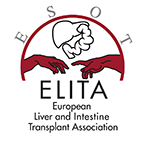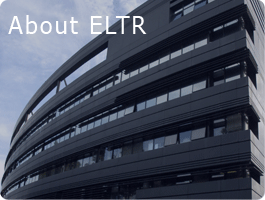Data management
- United Kingdom Blood and Transplant Authority (NHSBT)
- Spanish “Organizaciòn Nacional de Transplantes” (ONT)
- French “Agence de la Biomédecine” (ABM) Deutch “Nederlandse Transplantatie Stichting” (NTS)
- Scanditransplant (Denmark, Finland, Norway and Sweden) (SCT)
- Eurotransplant Foundation (Austria, Belgium, Croatia, Germany, Luxembourg, Netherlands and Slovenia) (ET)
- Patient and graft survival
- Patient survival according to the three main indications
- Distribution of primary indications
- Patient survival according to recipient age, and
- Causes of mortality following the first LT.
- The International Liver Transplantation Society (ILTS)
- The European Association for the Study of the Liver (AASLD)
- The Liver Intensive Care Group of Europe (LICAGE)
- Familial Amyloidotic Polyneuropathy World Transplant Registry and Domino Liver Transplant Registry (FAPWTR)
- The International Liver Cancer Association (ILCA)
- The European Acute Liver Failure Registry (EUROALF)
1. Questionnaire, Database and Data transfer
Participation to the Registry is voluntary. A standard questionnaire was established by the ELTR Experts Committee (ELTR-EC). The first part of the questionnaire includes data on LT indication, donor and recipient, technical aspects of LT (live donation, split liver, domino transplant, Non heart beating donors,…), and the initial immunosuppression. The second part concerns the patient follow-up and contains questions on the cause of death or graft failure and the maintenance immunosuppression.
To encourage completion, the questionnaire was intentionally limited to the main items. A Web-based module “ELTRweb platform” was developed to allow for real-time data capture. Software, questionnaires, validation routines and statistics are located on a central server, which can be accessed from participating transplant centers with a standard internet browser. This web-based approach enhances participation, and avoids time-consuming installation of software in many different centres. The ELTRweb platform was built by a SAS®-Programmer with innovative techniques of SAS technology for collection and analysis of electronic clinical data. It was tailored to meet the needs of LT centres looking to run registry studies.
2. Data validation
The data-entry process is dynamically controlled. A logic control procedure has been developed. The data are subjected to checks for completeness, consistency, and range. Comprehensive logical intra- and inter-updates are performed. A list of the queries is communicated to the Centre’s personnel in charge of data management each time a new update comparison is performed. The Centre performs the corrections before the data validation for analysis.
In addition, the ELTR has established collaboration with the key European Organ Sharing Organizations (OSO):
The purpose of this agreement was to exchange data collected from European Centres. The harmonization of questionnaires and classifications, sential step, was conducted prior to the start of collaboration.
The ELTR established also collaboration with the Liver Intensive Care Group of Europe (LICAGE) . Main perioperative variables were added to the ELTR questionnaire. The aim of this scientific collaboration is to bring together from throughout Europe specialists of all disciplines involved in the perioperative and long-term care of liver transplant recipients.
3. Data analysis and communication
Data are analyzed with Statistical Analysis System (SAS). The dynamics of data control are continued during the statistical analyzes. Editing and referral to clinical records are used when necessary to resolve any inconsistencies that are detected during the analysis. Most of the studies in which ELTR data is analyzed require calculation of survival rates of grafts and patients. These are determined by actuarial method and the statistical significance is determined by the Logrank test to compare survival curves. Updated results are available in this website at two localizations: Results and Documents to download. Regression methods are also used to identify risk factors associated with LT.
The ELTR is also a pediatric database and a specific routine data analysis concerns this population of patients. ELTR results are frequently presented to the European Society for Paediatric Gastroenterology, Hepatology and Nutrition (ESPGHAN)
A Center specific data analysis is done twice a year and five figures are available in the Documents to download
These figures have been selected according to the result of a survey. This is an additional way of data quality control because certainly Centers compare these figures to their local analyses. In case a contributing center needs additional analyses, a specific data request can be submitted directly to ELTR office. Nevertheless, some guidelines have to be respected for the ELTR data use in publication or communication.
4. Experts Scientific Committee, Workshops and Congresses
Periodic meetings are organized by the ELTR Expert Committee to review the questionnaire and to discuss topics of scientific and clinical interest. The expert Committee is composed of hepatologists and surgeons, which discuss each item of the questionnaire and validate the data entry masks and the instruction handbook. Periodic workshops workshops are also organized each two years and all of the persons in charge of the updating of ELTR data (Transplant Coordinators, Data Managers, OSO representatives) who are invited to give their comments and to report problems. The 10th ELTR workshop will be organized in 2014.
The ELTR-EC and the workshops permit to adapt the questionnaire and the data management procedures to the evolution of LT, in order to provide an updated evaluation of LT results. Traditionally, ELITA/ELTR organizes a Specialty Update Symposium at each ESOT Congresses. Moreover, The ELITA/ELTR organizes frequently joint meetings with other societies with topics of common interest:








